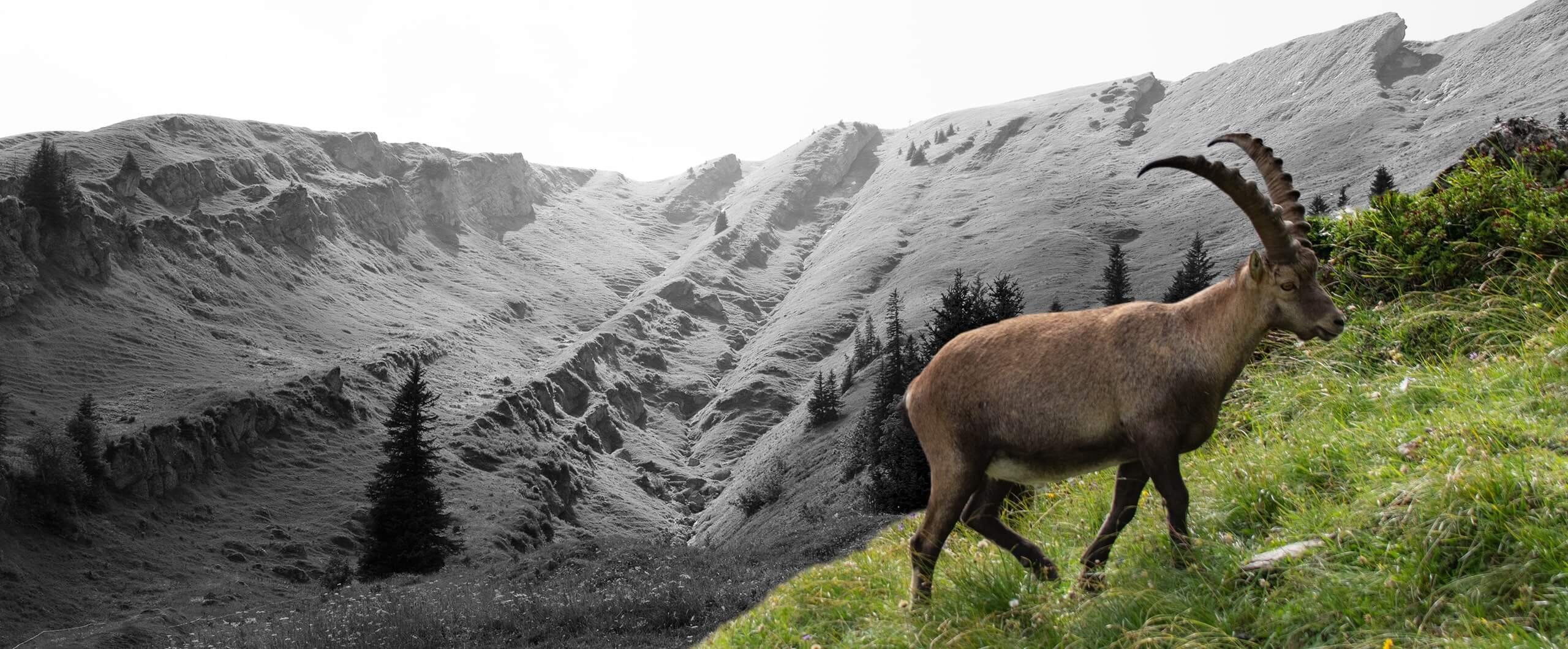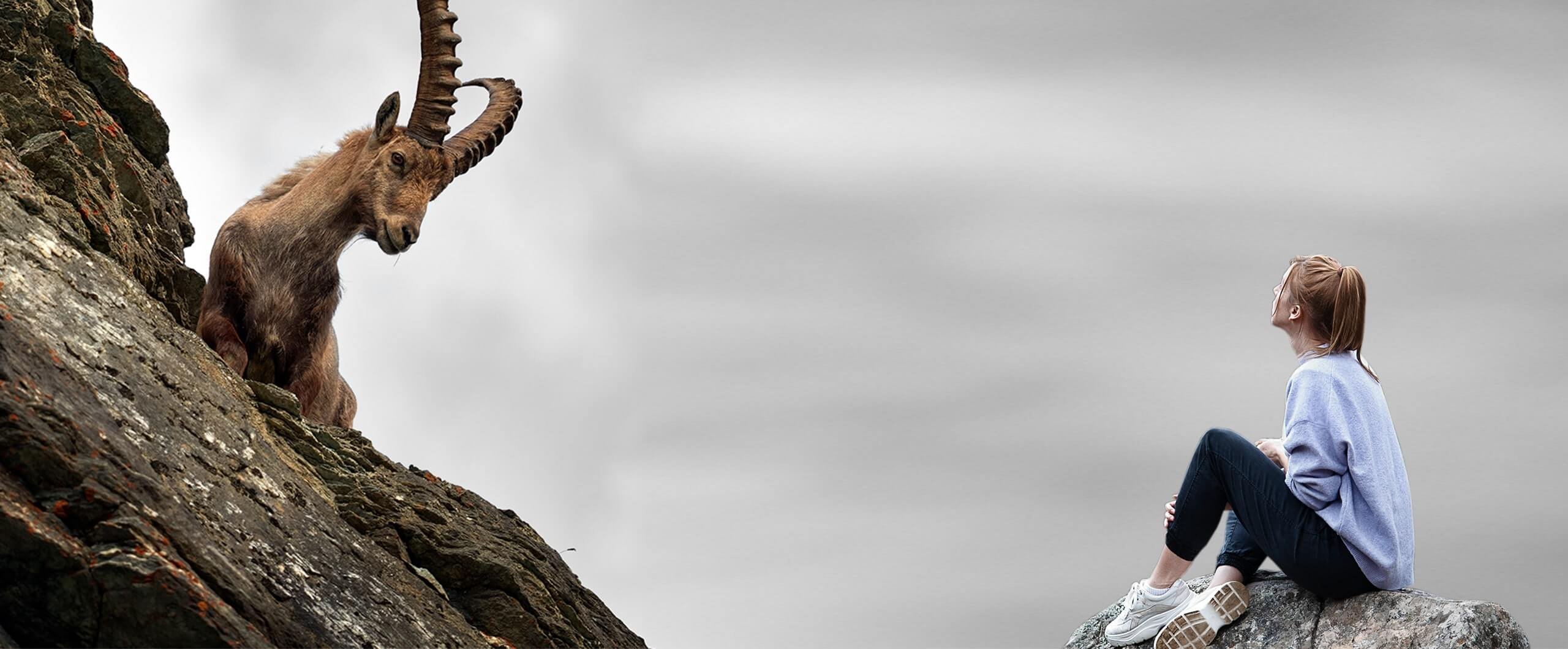
Ibex
(Capra ibex)
Profile
- Length: 140-170cm
- Shoulder height: 85-95cm
- Weight: 70-120kg
- The goats are somewhat smaller and more delicate
- Rutting and mating season: December to January
Habitat
The ibex is widespread throughout the Alps including the Allgäu High Alps and climbs to altitudes of 3500 meters. It prefers slopes interspersed with rocks. In winter it usually stays in middle altitudes on sun-exposed, steep slopes and sometimes seeks out areas below the timberline. Also in summer it often stays in lower altitudes to feed, while at night it seeks the high altitudes.
Behavior
Ibexes have an age-based hierarchy, meaning the older, larger bucks with the longer horns dominate over younger ones. These hierarchy levels are accepted by all bucks. Rank fights occur primarily between animals of the same age. The fights are never life-threatening, in contrast to those of the chamois..
In summer, ibexes live in mixed-age groups. Females form their own groups together with fawns and yearlings. During the rutting season, groups of both sexes form, only the highest-ranking bucks are admitted for mating.
Danger
In some areas, ibex are not very shy of humans, and the escape distance is then only up to 20 meters. However, they often perceive humans as a great danger, for example when skiers or ski tourers approach quickly, which drives the animals to an exhausting and energy-sapping flight. Especially resting animals can be surprised and frightened.
The Alpine Ibex was almost extinct at the beginning of the 19th century due to heavy hunting. Only in the Gran Paradiso area (Italy) survived a small residual population. All animals living in the Alps and Allgäu Alps today are descended from it.
Feature: Appearance
Ibex are hoofed animals with massive, stocky bodies on stout legs. Bucks have horns with pronounced nodes that are curved backward in a saber shape and can be up to a meter long. Bucks have horns up to 35 centimeters long and almost smooth. Ibex owe their climbing skills to specially adapted hooves. Horny edges provide tread resistance, soft inner pads prevent slipping. The two hoof toes are independently movable, allowing the foot to adapt to any unevenness. The "climbing fins" of the ibexes act through these peculiarities almost like suction cups and make the heavy animals light-footed climbers.
Therefore, note in the Oberallgäu:
- Stick to the marked routes during your tours and hikes.
- Do not make unnecessary noise.
- Avoid cut-free areas, especially in south-facing locations.
- When looking into a new trail section, keep a lookout. If you spot ibexes, avoid them if possible or give them time to move away in peace.
